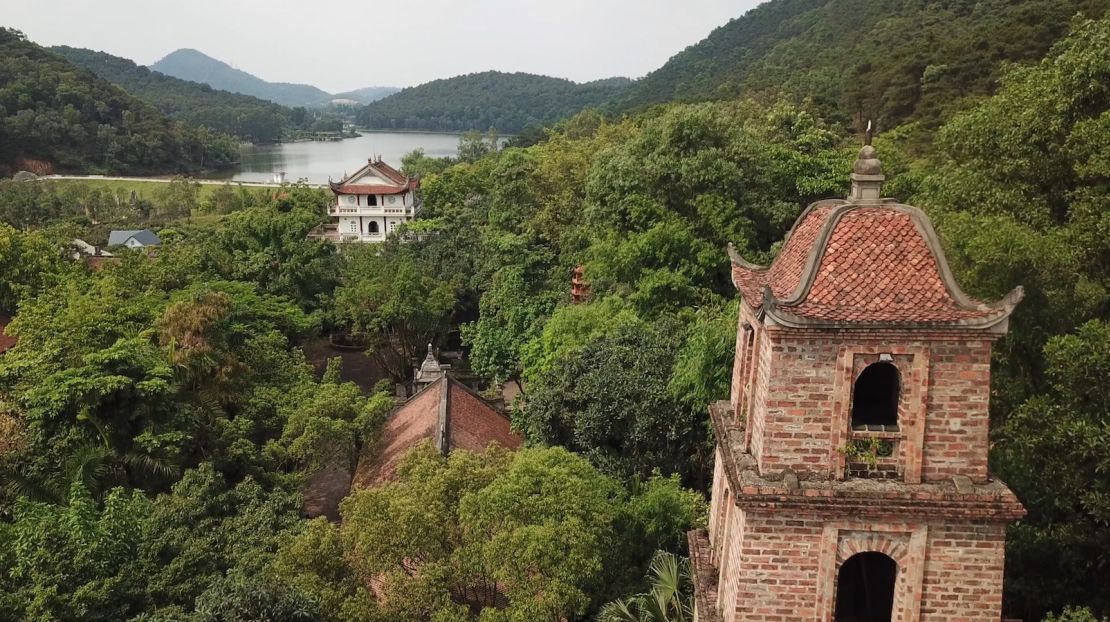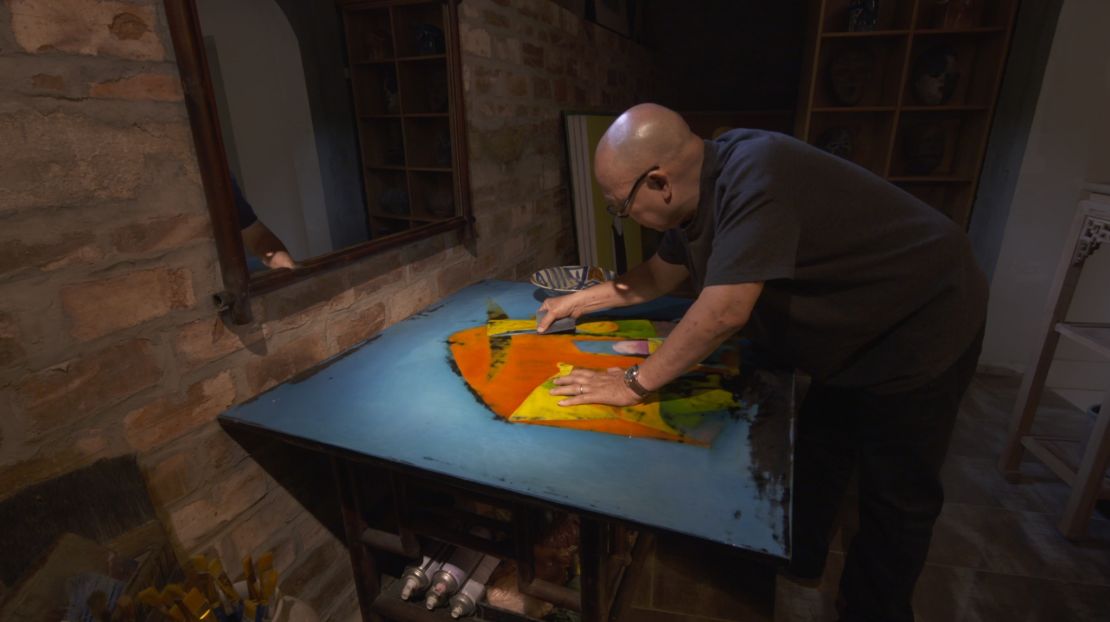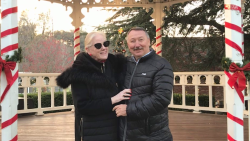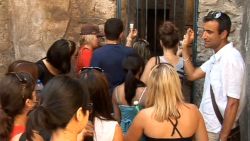Surrounded by peaceful lotus ponds and lush banyan trees, Thanh Chuong Viet Palace is one of the most culturally rich destinations in Vietnam.
Located on Soc Son Mountain, outside of the capital Hanoi, the palace tells the story of Vietnam’s cultural history through traditional architecture, artwork and folk heritage pieces.
As part of the preservation project, lots of the relics found around the grounds have been trucked in from the country’s outer provinces or sourced from many of the country’s 54 recognized ethnic groups, including stilt houses and a 500-year-old stone bridge.
“You can see that this place has everything, from space and atmosphere to ecology, architecture and art,” artist and founder Thanh Chuong tells CNN Travel.
“Even though we are a small, poverty-stricken farming nation that engages in wet rice cultivation, we always aim at the truth, goodness and beauty.”
Gorgeous Vietnam: Take a photo tour
A passion project
Though it’s now a well-visited museum, the 2.5-acre open-air complex began as personal passion project.
“My father was really passionate about Vietnam’s folk heritage. He knew everything about Vietnamese customs and practices, festivals and other cultural activities,” says Thanh Chuong. “Since such an early age, I have been greatly influenced by my father.”
The palace was originally intended as a personal sanctuary – a place where Thanh Chuong and his family could admire and appreciate Vietnamese art.
But frustration with Vietnam’s preservation policies led the artist to share the experience with others.

“We’re a nation of wars, which date back to thousands years ago. This means that there were times in history when our traditional heritage was completely destroyed,” says Thanh Chuong.
“(However), years of wars, natural disasters and poor behavior are not as catastrophic to Vietnamese traditional culture as the recent preservation initiatives carried out by other parties and the government.
“Why? Because they are doing things the wrong way. They completely destroy hundred-year-old relics and then build something else. I just don’t get it.”
Exploring the grounds
Opened to the public in 2009, the serene complex of banyan trees, pretty stone bridges, gazebos and temples quickly became a popular experience among residents and visitors in Hanoi.
As you wander through the gardens and buildings, each area feels like an homage to a different ethnic group or cultural tradition.

For example, there are various styles of stilt houses, some of which represent the traditional homes of the Muong people, an ethnic group from a region southwest of Hanoi.
“Our ancestors were farmers who spent their entire quiet lives behind the village’s bamboo bushes. Their culture is farming culture,” says Thanh Chuong.
“The very essence of our culture is simple, rustic, friendly, and pure. And that to me has always been the strongest sentiment – the deepest root of every Vietnamese.”
Art that speaks
Inside the galleries, meanwhile, you’ll find collections of paintings, ceramics, statues, antiques, and even Thanh Chuong’s own artwork.
One painting in particular catches the eye. It’s inspired by Vietnamese folklore, which claims that an immortal fairy mother and a dragon father gave birth to Vietnamese people.

“This painting portrays Vietnamese mothering figures who went through years of wars, hardship, and natural disasters, yet they still wanted their descendants to know about the great legend of ‘Con Rong Chau Tien’ [Children of Dragon, Grandchildren of Gods],” explains Thanh Chuong of one image.
“It’s the root and foundation of our nation. [This painting] embodies my spirit and passion for preserving our ancestors’ cultural heritage for future generations.”
Stay for a show
Over the years, the complex has also become a popular place to catch water puppet shows and folk music performances.
“Water puppetry is one of the oldest Vietnamese art forms and it depicts common aspects of Vietnamese culture … This is why we must dedicate a place in Viet Palace for water puppetry,” explains Thanh Chuong.
“This theater was designed based on the water pavilion in Thay Pagoda, which is home of the creator of water puppetry, the venerable monk Tu Dao Hanh.”
The various folk performances typically involve singing, dancing and music to tell stories of Vietnam’s past.
“Life has become a lot more complicated in the modern world, so nowadays many people want to go back in time and do things in a simple, natural way,” says Thanh Chuong.
“I built this place to preserve that old way of living and the beautiful spirit of Vietnamese culture.”










































